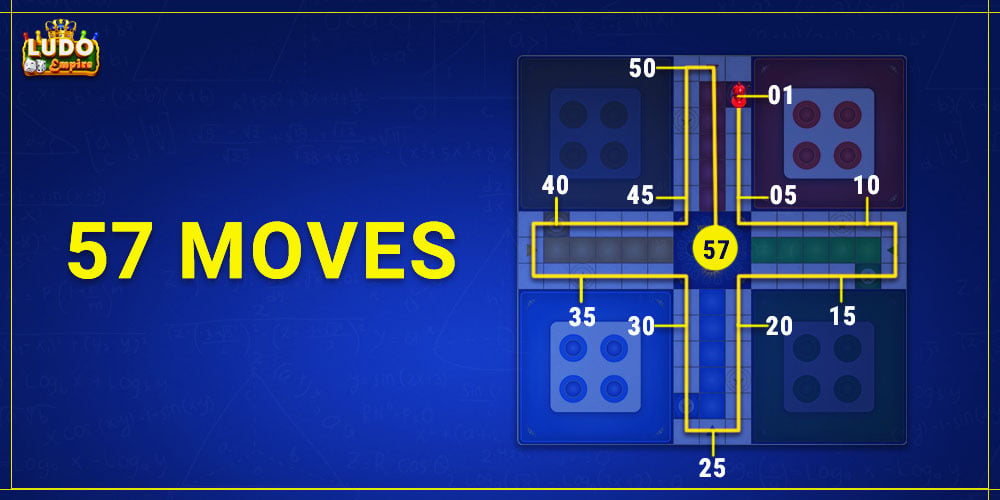Ludo is a beloved board game that has entertained generations of players around the world. It’s a game of strategy, luck, and, believe it or not, mathematics. While you might not think of math while playing Ludo, there’s a world of probability and chance hidden behind every roll of the dice. In this blog, we’ll explore the fascinating mathematics of Ludo and how understanding it can improve your gameplay.
The Basics of Ludo
Before we dive into the mathematics, let’s briefly review the rules of Ludo. The game is typically played on a square board divided into four colored sections, with each player having four tokens of their own color. Players take turns rolling a six-sided dice to move their tokens around the board, aiming to reach their home base before their opponents. The first player to take all their tokens home wins the game.
Now, let’s get into the mathematical ludo cube and its numbers!
Probability in Ludo
Probability plays a crucial role in Ludo, especially when it comes to rolling the online Ludo dice. When it comes to games like the earn real-money online Ludo Empire game which has a certified random and unpredictable ludo roll dice, understanding the probabilities associated with each roll can help you make informed decisions during the game.
1. Probability of Rolling a Particular Number
Ludo uses a standard six-sided dice. Each side of the dice has an equal chance of landing face up. This means that the probability of rolling any specific number on the dice (1 through 6) is 1/6 or approximately 16.67%.
2. Probability of Hitting Your Opponent’s Token
When your token is close to an opponent’s token, there’s a chance you might land on it and send it back to the starting area. To calculate the probability of this happening, you need to consider the number of ways you can roll the necessary number to land on your opponent’s token. The more ways there are, the higher the probability of success.
The Quest for 57 Moves
Ludo Empire enthusiasts often talk about the 57-move victory as the ultimate achievement. In the Ludo Empire Classic mode, it takes exactly 57 moves to take their token from base to home and win, as such, a player must carefully calculate their moves and rely on a favorable sequence of dice rolls. Here’s how it works mathematically:
1. Probability of Rolling a 6 or a 1
To move a token out of the starting area, you need to roll either a 6 or a 1. The probability of rolling a 6 or a 1 on a fair six-sided ludo dice is 1/6 or approximately 16.67% for each. This step is crucial for every player striving for a 57-move victory.
2. Sequential 6s
Achieving the 57-move victory usually requires consecutive rolls of 6. To calculate the probability of rolling two or more 6s in a row, you simply multiply the probabilities. For two consecutive 6s, it’s (1/6) x (1/6) = 1/36, or roughly 2.78%. For three consecutive 6s, it’s (1/6) x (1/6) x (1/6) = 1/216, or around 0.46%, however, if you roll three consecutive 6s in the Ludo Empire online game, your mathematical ludo cube number will become null and you will lose a turn.
3. Combining Dice Outcomes
To get the desired 57 moves, players must combine their dice outcomes. This can involve various combinations of 6s and other numbers. Calculating the exact probability of achieving 57 moves is a complex task, as it depends on a sequence of rolls and the player’s Ludo strategy.

Strategy and Decision-Making
Understanding the probabilities in Ludo can inform your strategic decisions. Here are some key insights:
1. Moving Out of the Starting Area
Knowing that you have a 1/6 chance each of rolling a 6 or a 1 can help you decide when to move a token out of the starting area. Sometimes it’s better to wait for a 6 or a 1 to increase your odds of getting a token onto the board quickly.
2. Blocking Your Opponents
If you’re aware of the probabilities, you can strategically place your tokens to block your opponents. For example, positioning your tokens in a way that makes it harder for your opponents to reach their home base can be a winning strategy.
3. Risk and Reward:
Understanding the probability of hitting an opponent’s token versus the probability of moving your token closer to your home base can help you make calculated decisions. Sometimes it’s worth taking the risk, while other times it’s better to play it safe.
Conclusion
Ludo is not just a game of luck; it’s a game of mathematics too. Understanding the probabilities and chances associated with each roll of the dice can give you a competitive edge and make your gameplay more strategic. Whether you play Ludo for fun with family and friends or in more competitive settings, a basic understanding of the mathematics involved can enhance your enjoyment and increase your chances of victory. So, next time you roll the dice in Ludo, remember that there’s more to the game than meets the eye – there’s a world of probability and chance waiting to be explored.
FAQs
1. What role does probability play in Ludo?
Probability in Ludo refers to the likelihood of rolling a specific number on the dice, which determines how your game pieces move during your turn.
2. Can mastering probability guarantee a win in Ludo?
No, probability-based strategies can’t guarantee a win in Ludo because the game still involves an element of luck in each roll of the dice.
3. How can understanding probability improve my Ludo gameplay?
Understanding probability helps you make informed decisions, choose optimal game piece movements and adapt your strategy, increasing your overall chances of success in Ludo.

